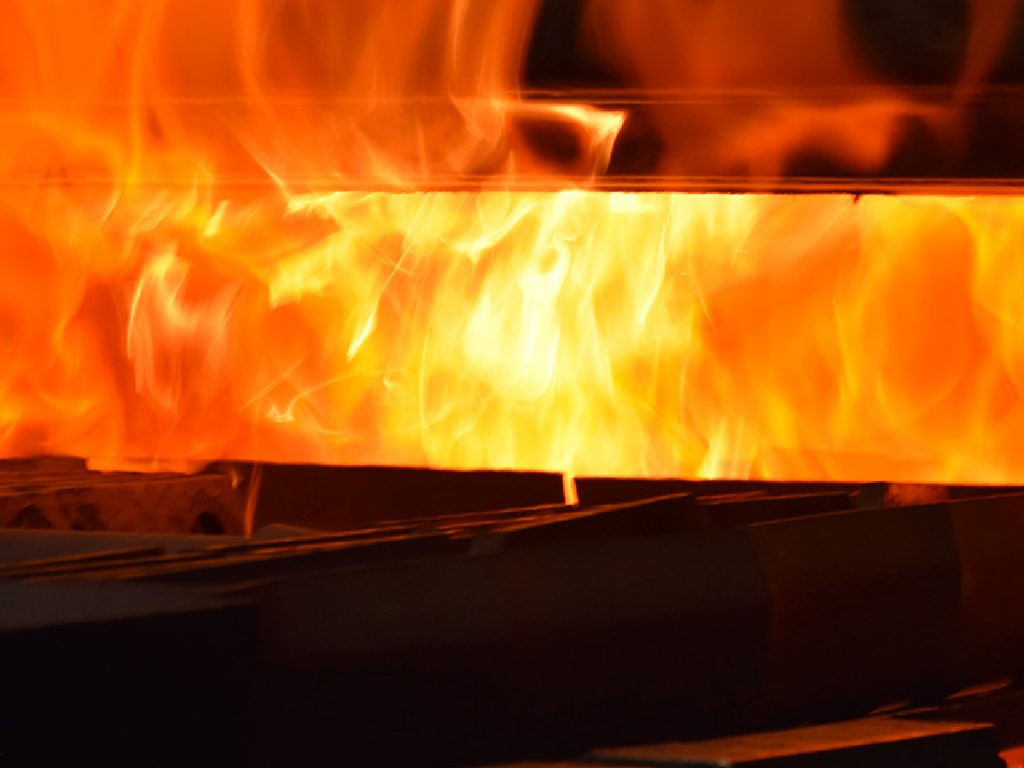Cementation is a thermochemical treatment that consists of carburizing a surface layer of a steel part, surrounding it with a fuel product and heating it to a suitable temperature by means of diffusion, modifying its composition, impregnating the surface and then subjecting it to a heat treatment, quenching and tempering, leaving the part with good tenacity in the core and with great surface hardness.
The objective of the hardening is that in the hardening of the steel it provides hardness to the piece, but also fragility. On the contrary, if the material is not hardened, it will not be hard enough and will wear out. In order to preserve the best qualities of both cases, case-hardening is used, which hardens
the surface of the part without modification of the core, thus giving rise to a part formed by two materials, that of the core made of low carbon steel, tough and resistant to fatigue, and the surface part made of steel with a higher concentration of carbon, harder, resistant to wear and
deformations, being all of them a single compact piece.
It consists of coating the parts to be cemented with a material rich in carbon, called cementitious material, and subjecting it to high temperatures of 900 °C for several hours. In these conditions is when the carbon has greater capacity of dissolution, that will be penetrating in the surface that covers at the rate of 0.1 to 0.2 millimeters per hour of treatment. Once absorbed by the peripheral layer of the steel, the process of diffusion of the carbon towards the interior of the piece begins (the thickness of the cemented layer depends on the temperature and the time that the operation lasts). The part thus obtained is given the corresponding heat treatment, of hardening and tempering, and each of the two areas of the part will acquire the qualities that correspond to its percentage of carbon. Sometimes two tempering processes are carried out, one homogeneous to the whole piece and a second tempering process that hardens the external part.
The cementation finds application in all those pieces that have to possess great resistance to the shock and tenacity together with a great resistance to the wear, as it is the case of the pinions, cams, axles, etc.
We can differentiate three types of cementitious materials:
- Solids
- Liquids
- Gaseous
SOLIDS
For cementing in a solid medium, the clean and oxide-free parts are placed in the cementing mixture, inside welded and sealed steel plate boxes. These boxes are then loaded into the carburizing furnace, and kept there for several hours at a temperature between approximately 900 ºC and 950 ºC, until the desired depth of the diffusion layer is obtained. As a cementing mixture, 70% to 80% of the vegetable carbon can be used, which is finally pulverized, with 20% to 30% of one of the following carbonates: barium carbonate (BaCO3), sodium carbonate (Na2CO3) or potassium carbonate (K2CO3), which act as catalysts and contribute to the release of the elemental carbon, necessary for the cementing. A putty made of foundry sand mixed with sodium silicate (soluble glass) can be used to seal the lid of the cementing box.
The equipment used for solid cementation is boxes where the cementitious mixture is cemented around the piece in a closed container, which is heated to the right temperature for the required time and then slowly cooled. This equipment does not lend itself to high production, being its main advantages its economy, efficiency and the non necessity of a prepared atmosphere. Actually, the cementitious agent is the gases, which this paste surrounds the material that it gives off when it is heated in the furnace.
LIQUIDS
For cementation in a liquid medium, the pieces are placed in a bath of molten salts at approximately 950 °C, consisting of a base salt, generally sodium chloride or sodium carbonate, with the addition of a carbon, sodium cyanide or potassium salt and an activating salt, barium chloride, mixed in suitable percentages, according to the results to be obtained. The presence of nitrogen in the cyanides also causes the formation of reaction products (nitrides) of high hardness but limited to a very thin outer layer.
GASEOUS
Gaseous cementing requires more complicated special equipment and is applied to the mass production of cemented parts. Gaseous cementing has considerable advantages over solid and liquid cementing, the process is two to three times faster, the technology is less harmful to health, and the properties of the uncemented core are better due to less grain growth. The process is carried out in special furnaces, inside which some saturated hydrocarbons such as methane, butane, propane and others are injected as cementation gas. By heating some
Approximately 900 ºC and 1000 ºC, the elemental carbon that cements the steel is released. For example when heating methane.
CH4 –> C + 2H2
The equipment used for gaseous cementation is more efficient and complex than the previous ones, the cycles are more controlled, the heating is more uniform, it is cleaner and requires less space. The part is heated in contact with CO and/or a hydrocarbon, for example some gas mixture containing butane, propane or methane, which easily decomposes at the carburizing temperature. The gas has a typical composition of: CO 20 %, H2 40 % and N2 40 %. The composition of the gas can be modified to control the carbon potential.
In MetalCast we offer this heat treatment and others to achieve the requirements of the metal parts that our customer needs.
Contact our team to identify the necessary elements so that your project of production of metallic pieces to the measure has the characteristics that this looking for your company.

